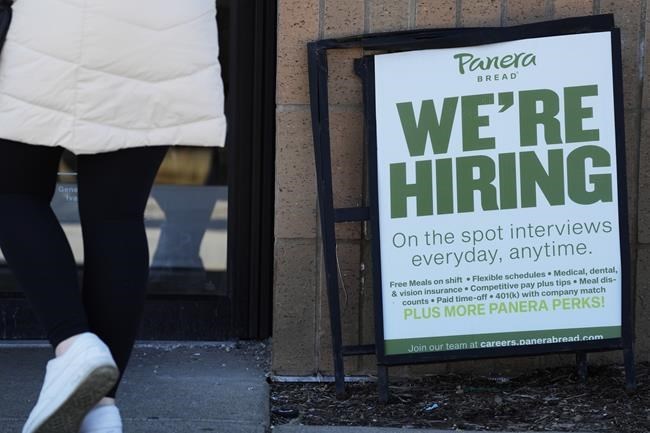The labor market continues to defy Federal Reserve attempts to cool hiring, with U.S. applications for unemployment benefits down again last week and remaining at historically low levels.
Jobless claims in the U.S. for the week ending March 18 fell by 1,000 to 191,000 from the previous week, the Labor Department said Thursday.
The four-week moving average of claims, which flattens out some of week-to-week volatility, fell by 250 to 196,250, remaining below the 200,000 threshold for the ninth straight week.
Applications for unemployment benefits are seen as a barometer for layoffs in the U.S.
On Wednesday, the Federal Reserve extended its year-long fight against high inflation by raising its key interest rate by a quarter-point, despite concerns that higher borrowing rates could worsen the turmoil that has gripped the banking system.
Fed Chair Jerome Powell stressed that the central bank remains focused on fighting high inflation, which could require additional rate hikes.
Yet he also signaled that the Fed might not need to impose a lengthy string of increases if more banks were to reduce their lending to conserve cash. This could slow the economy, hiring and inflation, Powell said.
The Fed’s rate increases are meant to cool the economy, labor market and wages, thereby suppressing prices. But so far, those things have not happened to the degree that the central bank had hoped.
Inflation remains more than double the Fed’s 2% target, and the economy is growing and adding jobs at a healthy clip.
Last month, the government reported that employers added a substantial 311,000 jobs in February, fewer than January’s huge gain but enough to keep pressure on the Federal Reserve to raise interest rates aggressively to fight inflation. The unemployment rate rose to 3.6%, from a 53-year low of 3.4%.
In its latest quarterly projections, the Fed predicts that the unemployment rate will rise from its current 3.6% to 4.5% by year’s end, a sizable increase historically associated with recessions.
Though the U.S. labor market remains strong, layoffs have been mounting in the technology sector, where many companies hired aggressively during the pandemic. IBM, Microsoft, Salesforce, Twitter and DoorDash have all announced layoffs in recent months.
Amazon said this week that it would cut another 9,000 positions, adding to the 18,000 employees the tech giant said it would lay off in January.
Last week, Facebook parent Meta said it was slashing another 10,000 jobs in addition to the 11,000 culled in November.
The real estate sector has taken the biggest hit from the Fed’s interest rate hikes. Higher mortgage rates — which have risen closer to 7% again in recent weeks — had slowed home sales for 12 straight months before February’s 14.5% improvement.
About 1.69 million people were receiving jobless aid the week that ended March 11, an increase of 14,000 from the week before. That number is close to pre-pandemic levels.
Matt Ott, The Associated Press



